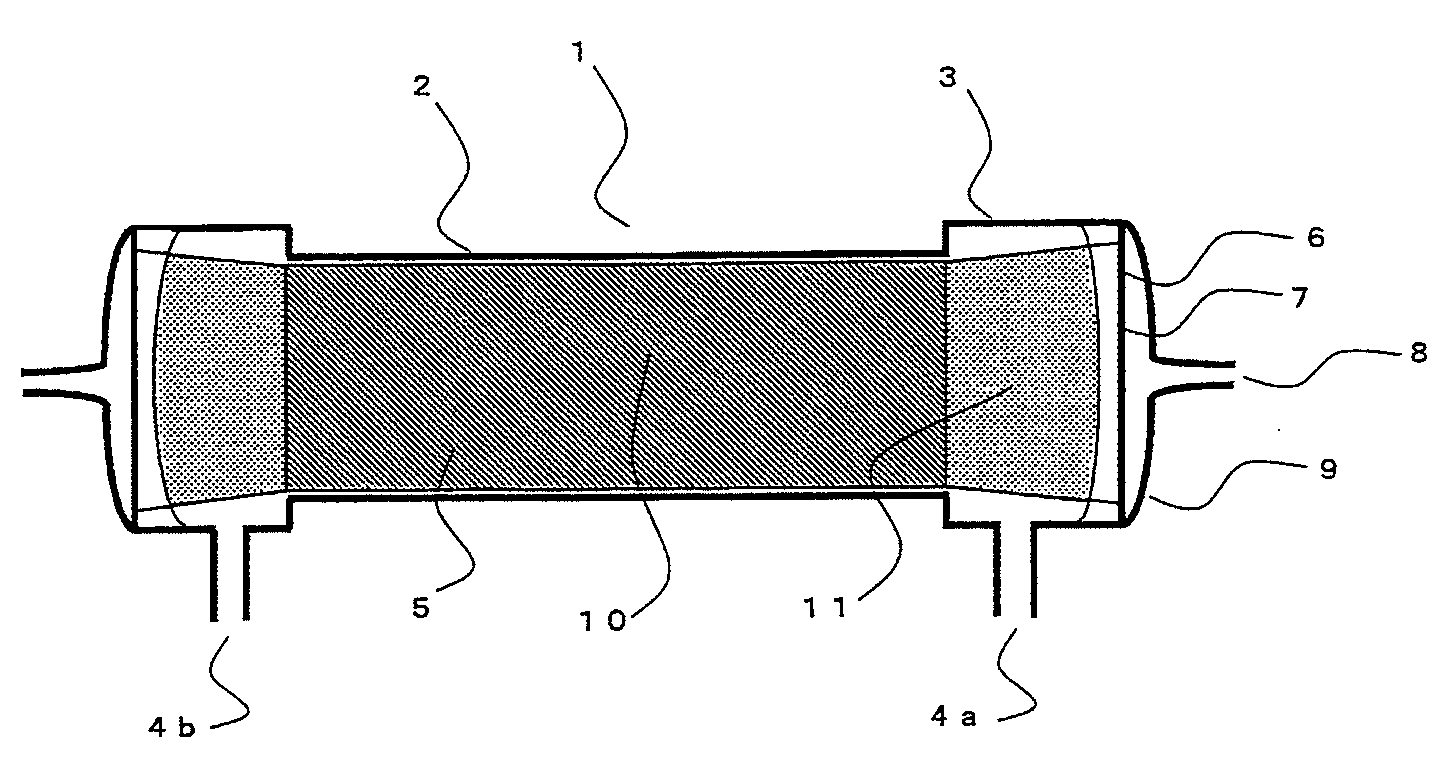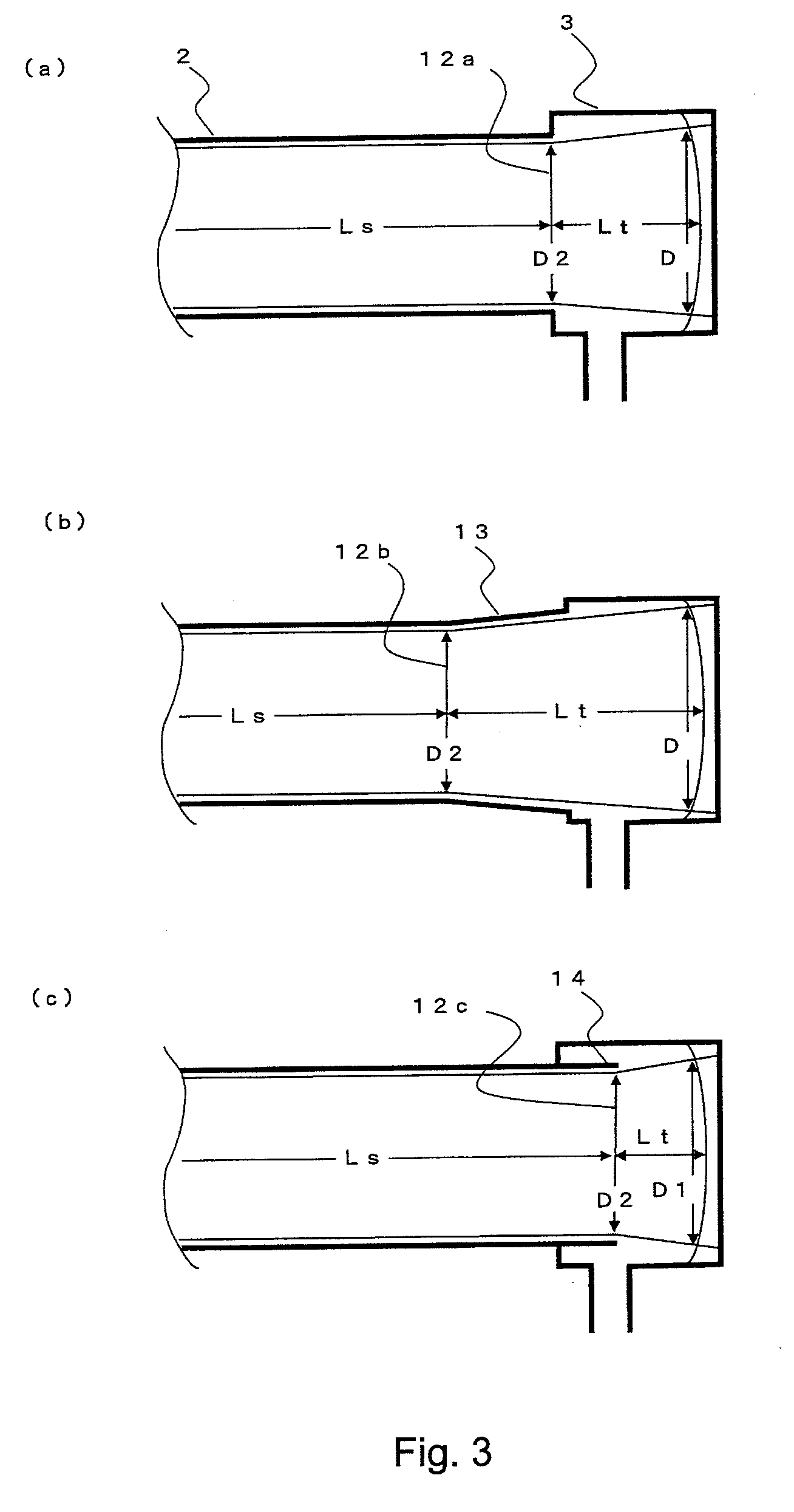Polysulfone Hemodialyzer
a polysulfone and hemodialyzer technology, applied in the field of hemodialyzers, can solve the problems of inability to put polysulfone hemodialyzers with a large membrane area to practical use, poor biocompatibility of former hemodialyzer membrane material, loss of electrolyte balance in the body, etc., to achieve high dialysis performance, large membrane area, and high dialysis performan
- Summary
- Abstract
- Description
- Claims
- Application Information
AI Technical Summary
Benefits of technology
Problems solved by technology
Method used
Image
Examples
example 1
[0123]A hollow fiber membrane bundle formed from polysulfone and polyvinylpyrrolidone and having 16,130 filaments and a length of 30 cm was provided referring to a known wet spinning method for a polysulfone hemodialysis membrane (WO 98 / 52683). The hollow fiber membrane in the bundle had a cross-sectional structure with an inner diameter of 185 μm and a thickness of 45 μm and was crimped at a pitch of 0.8 cm and an amplitude of 0.5 mm. The water permeation rate was 298 ml / mmHg·hr·m2.
[0124]A tubular housing, of which the minimum inner diameter of the body portion was 45.9 mm, the inner diameter of the housing at the diameter-expansion-start surface was 46.2 mm, and the length of the straight portion was 220 mm and which had a peripheral type baffle with a height of 6 mm at the boundary between the body portion and the head portion, was filled with the bundle. A restriction ring with an inner diameter of 57 mm was secured to the end portion of the tubular housing. A dispersion pipe wi...
example 2
[0127]A hemodialyzer was prepared in the same manner as in Example 1 except for using a restriction ring with an inner diameter of 47 mm. A dialysate rectifying portion with a dialysate channel ratio of 0.40 and a length of 13 mm was formed in the resulting hemodialyzer.
example 3
[0128]A hemodialyzer was prepared in the same manner as in Example 1 except for performing the second spraying for five seconds when spraying compressed air. A dialysate rectifying portion with a dialysate channel ratio of 0.31 and a length of 27 mm was formed in the resulting hemodialyzer.
PUM
| Property | Measurement | Unit |
|---|---|---|
| area | aaaaa | aaaaa |
| area | aaaaa | aaaaa |
| thickness | aaaaa | aaaaa |
Abstract
Description
Claims
Application Information
 Login to View More
Login to View More - R&D
- Intellectual Property
- Life Sciences
- Materials
- Tech Scout
- Unparalleled Data Quality
- Higher Quality Content
- 60% Fewer Hallucinations
Browse by: Latest US Patents, China's latest patents, Technical Efficacy Thesaurus, Application Domain, Technology Topic, Popular Technical Reports.
© 2025 PatSnap. All rights reserved.Legal|Privacy policy|Modern Slavery Act Transparency Statement|Sitemap|About US| Contact US: help@patsnap.com



